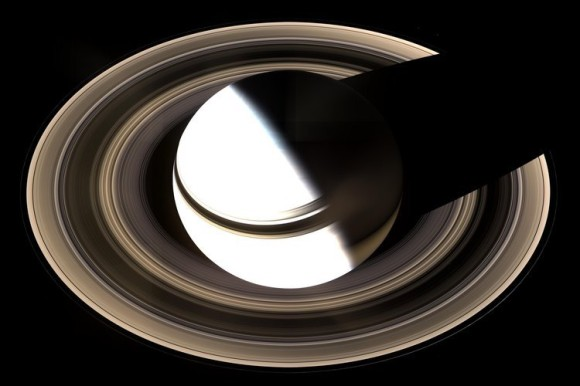The rings of Saturn are the most extensive planetary ring system of any planet in the Solar System.
I'm wondering, what power is primarily responsible for that stability?

The rings of Saturn are the most extensive planetary ring system of any planet in the Solar System.
I'm wondering, what power is primarily responsible for that stability?

The stability of an object orbiting around a massive object is due to nothing but, gravity always. There's no power. Gravity is a force and not the force times distance per second (which is power) - not exactly...
For now, we've got two theories governing the formation for rings. Well, both the theories are good. One, which assumes that the rings are formed during the nebula phase, along with the planet. Second, it's the Roche limit theory which says that some celestial body has collided with an orbiting moon, which crossed into the Roche limit, disintegrated by the tidal forces and has become a history.
Since the mass of Saturn remains the same anyway, the objects just keep on revolving around it - just like the satellite debris around our planet, which are always falling and don't simply crash into the planet.
Assuming by "power" you mean force, then the obvious answer is gravity. There is an equation called the Roche Limit which tells you the distance that an object needs to be orbiting at to be held together by it's own gravity. If it enters the Roche limit then it will break up. This is the case for rings around planets. The Roche limit is as follows $$R_{M}=2.44R_{M}(\frac{\rho_{M}}{\rho_{m}})^{\frac{1}{3}}$$ where $\rho$ is the density, M denotes the the large mass and m would be the orbiting mass. Basically if the rings are of the same density as the body it is orbiting it can be a maximum of 2.5 (rounding) times the diameter of the body its orbiting. That is when $$\rho_{M}=\rho_{m}$$ To clarify on something else, these rings aren't actually that stable. They are much less stable than say a moon. Eventually the rings will start to move either away or towards the planet and break up. This is why rings are not as common. They are much more common, theoretically, on newer planets.